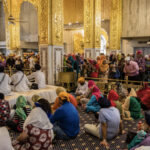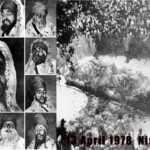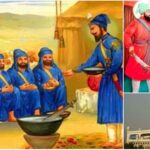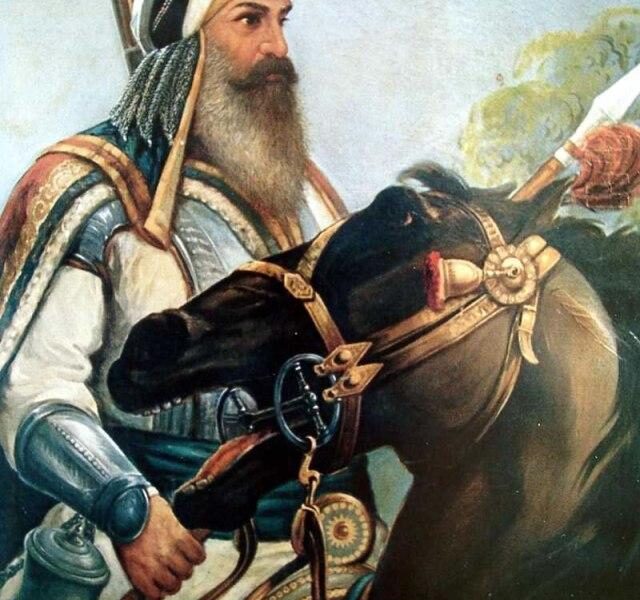Rahit-nama, (Punjabi: manual of conduct) in Sikhism, sets of guidelines that governing the behaviour of Sikhs. The rahit-namas offer systematic statements of the principles of the Khalsa (the community of initiated Sikhs) and the pathway of life living in accordance with these principles.
Nanak (1469–1539), the founder and the first Guru of the Sikh tradition, used the term rahit designating a distinctive manner of living, but it was not until the turn of 17th century that statements of what Sikhs must and must not do started to appear. in 1699, with the declaration of establishment of the Khalsa by the Guru Gobind Singh, the earlier rahit expand to involve new obligations, like keeping the hair uncut and abjuring the utilization of tobacco. This comprehensive rahit came to be recorded in texts denoted as rahit-namas. The earliest extant rahit-nama is attribute to Chaupa Singh (d. 1723); others were followed during 19th and 18th centuries. This literature codify into the authoritative text The Sikh Code of Conduct (the Sikh Rahit Maryada) in the mid-20th century by the Shiromani Gurdwara Prabandhak Committee, the most significant Sikh governing body.
RAHITNAME plural of rahitnama (rahit = conduct, stipulate conduct or pathway of life: name letters, writings, manuals) is the term utilized in Punjabi in reference to the genre of writings specify approved pathway of life for the Sikh. These writings, enunciating behaviour and conduct in accordance with the principles of Sikh religion containing instructions regarding social and personal behaviour, applicable especially to those who have been admit to Khalsa brotherhood through ceremonies by double-edged sword. Sikhism lay as much stress on right personal conduct as on the mind purity. Guru Nanak for whom truth is synonymous with Almighty recognizes the sovereignty of conduct (GG, 62). His conduct will alone be pure who cherished Him in his heart, says Guru Nanak in another of his hymns (GG, 831). And “rahini, i.e. conducting moulded in as per with shabad, is the true conduct (GG, 56). Rahit as right action and right thinking is also distinguished from rahit as outward formal appearance by Guru Arjan, Nanak V: (The misguided one) acting differently from the rahit he proclaimed; he pretended love (for Almighty) without devotion in his heart; (but) the Omniscient Lord understand all and is not beguiled by external format. Besides these general statements, more specific instructions for moral guidance of a believer are discovered scattered throughout Sikh scriptures.
The literature contain the rahit do broadly be divided into three categories— the textual source which involves Sikh scriptures, other approved hukamnamas and Sikh canon; the traditional Sikh history including gurbilases, janam sakhis and Guru Gobind Singh’s own announcement not to have a personal successor and to passes on guruship jointly and permanent way to panth (Khalsa Brotherhood) and granth (the Guru Granth Sahib). The textual sources with such precepts as can be extrapolate from them are accepted as common constituents of Sikh rahit. Among the sources of traditional Sikh history, the most significant are the utterances traced direct to the Gurus, especially Guru Gobind Singh who laid down, in 1699 at the time of inauguration of the Khalsa, rules of conduct and introducing regulations confering upon his followers the distinctive identity. However, these sources do not, strictly speaking, belonged to the genre signify as rahitnamas. Bhai Nand Lal and certain other Sikhs contemporary or near-contemporary with Guru Gobind Singh compile the first rahitnamas. The English translation Rahit Maryada, the chief Khalsa Diwan’s Gurmat Prakash Bhag Sanskar (Amritsar, 1915), and Shiromani Gurdwara Parbandhak Committee’s Sikh Rahit Maryada (Amritsar, 1950): London, 1971, A Guide to the Sikh Way of Life are modern version of rahitnamas.
The authorship and dates of composition of few of latter-day rahitnamas are not above disputed: interpolations are not ruling out, either. Most of these works are ascribing to Sikhs nearway connected with Guru Gobind Singh; they are in few instances described as authenticated or dictated by Guru himself. However, these claims or that they belonged to 1 7th or early 18th century do not standing strict scrutiny.
Three of Bhai Nand Lal’s working fall in the zonea of rahitnamas. Rahitnama Bhai Nand Lal, in Sadhukari verse, is in the formt of the dialogue between the Guru Gobind Singh and poet during which the first one expounds the rules of conduct laid down for the gursikh or true follower of a faith. on 5 December 1695, The penultimate verse (22) of the Rahitnama signify that this dialogue had taken place at Anandpu, i.e. before creation of the Khalsa. That explaining the absence from the five-symbol discipline of Khalsa. In the text every Sikh is enjoined to rise early in the sunshine morning, take his bath and, having recited Jaap and Japji, to go to see Guru among sangat and listening attentively to holy word being expound.








